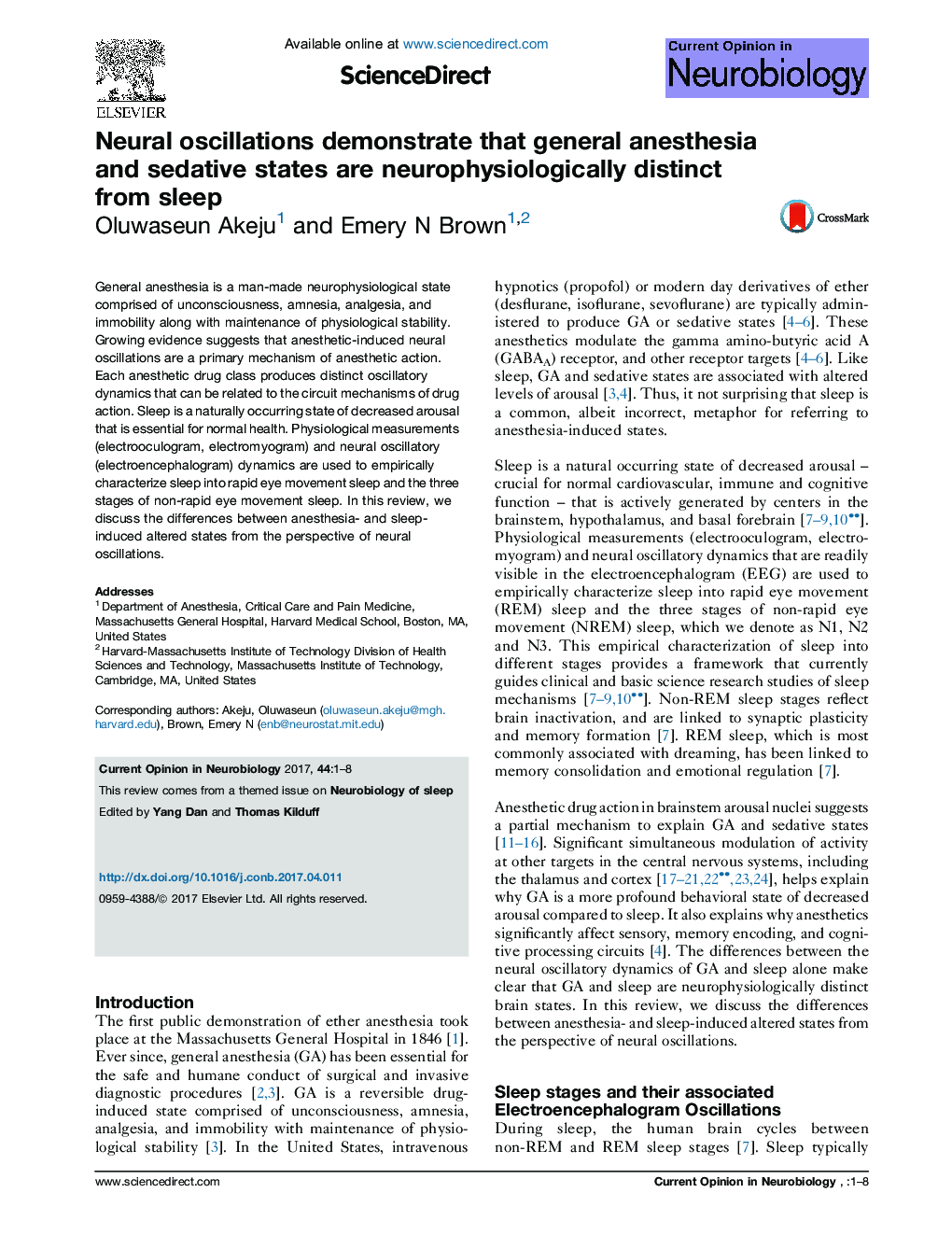| Article ID | Journal | Published Year | Pages | File Type |
|---|---|---|---|---|
| 5737022 | Current Opinion in Neurobiology | 2017 | 8 Pages |
Abstract
General anesthesia is a man-made neurophysiological state comprised of unconsciousness, amnesia, analgesia, and immobility along with maintenance of physiological stability. Growing evidence suggests that anesthetic-induced neural oscillations are a primary mechanism of anesthetic action. Each anesthetic drug class produces distinct oscillatory dynamics that can be related to the circuit mechanisms of drug action. Sleep is a naturally occurring state of decreased arousal that is essential for normal health. Physiological measurements (electrooculogram, electromyogram) and neural oscillatory (electroencephalogram) dynamics are used to empirically characterize sleep into rapid eye movement sleep and the three stages of non-rapid eye movement sleep. In this review, we discuss the differences between anesthesia- and sleep-induced altered states from the perspective of neural oscillations.
Related Topics
Life Sciences
Neuroscience
Neuroscience (General)
Authors
Oluwaseun Akeju, Emery N Brown,
